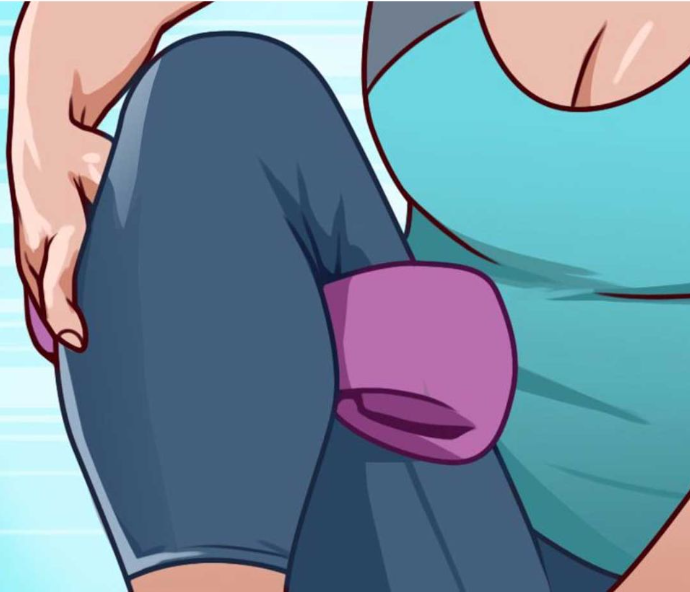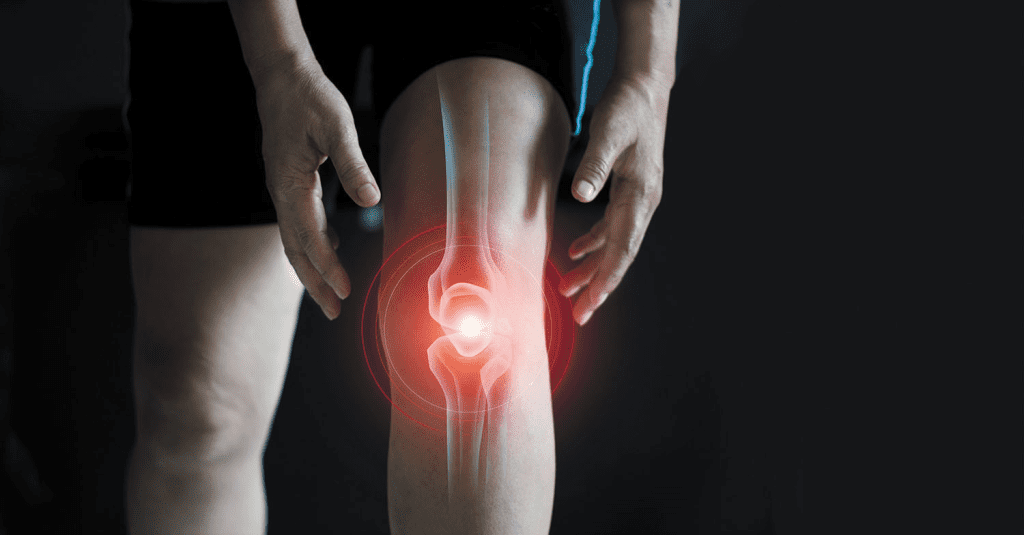Knee pain is a common issue affecting millions of people, whether due to injuries, arthritis, or everyday wear and tear. It can manifest as stiffness, swelling, or a sharp pain that makes even the simplest movements difficult. While there are numerous treatment options for knee pain, a new, non-invasive technique is making waves for its simplicity and effectiveness. This article will explore the dish towel technique, a method you can try at home to help alleviate knee discomfort and regain your mobility.

Understanding Knee Pain and Its Common Causes
Before diving into the dish towel technique, it’s essential to understand why knee pain occurs in the first place. The knee is a complex joint that bears the body’s weight and enables movement, so it’s no surprise that it’s prone to problems. Common causes of knee pain include:
- Injuries like ligament tears, sprains, or fractures
- Arthritis, particularly osteoarthritis, which leads to joint wear and tear
- Tendinitis and bursitis, both of which involve inflammation around the knee
- Mechanical issues such as a dislocated kneecap or iliotibial band syndrome
Regardless of the cause, knee pain can make daily tasks challenging and significantly reduce your quality of life. That’s why finding effective relief methods, like the dish towel technique, can make a huge difference.
What Is the Dish Towel Technique?
The dish towel technique is a straightforward method you can use at home to relieve knee pain. It involves placing a rolled or folded dish towel behind your knee to create gentle separation between the joint surfaces. This simple adjustment can alleviate pressure, improve circulation, and ultimately reduce pain and stiffness.
The beauty of this technique lies in its simplicity—it doesn’t require any special equipment or advanced skills. It’s something you can easily integrate into your daily routine, whether you’re relaxing on the couch or lying in bed. Let’s take a closer look at how to perform the dish towel technique and why it works so effectively.
How to Perform the Dish Towel Technique
To use the dish towel technique, follow these easy steps:
- Grab a Clean Dish Towel: Choose a towel that’s not too thick or too thin, as you want it to provide support without causing discomfort.
- Roll the Towel: Fold or roll the towel into a snug, cylindrical shape. It should be thick enough to fill the space behind your knee when slightly bent.
- Place the Towel Behind Your Knee: Sit comfortably or lie down with your leg extended. Gently bend your knee and place the rolled towel behind the joint, ensuring it fits snugly but not too tightly.
- Hold the Position: Remain in this position for about 15 to 20 minutes. You can repeat this process several times a day, depending on the severity of your knee pain.
The gentle pressure from the towel helps to create slight separation between the knee joint surfaces, reducing friction and encouraging blood flow. This, in turn, helps to alleviate discomfort and improve your range of motion over time.

The Science Behind the Dish Towel Technique
So why does this simple technique work so well? The dish towel technique is based on the principles of joint spacing and pressure relief. Here’s a breakdown of the science behind it:
- Joint Separation: By placing a towel behind your knee, you’re creating a small amount of space between the bones within the joint. This helps to reduce friction, which can be a major source of pain, especially in cases of arthritis or inflammation.
- Improved Circulation: The towel provides gentle compression, which promotes blood flow to the area. Better circulation means more oxygen and nutrients are delivered to the tissues, helping to reduce inflammation and promote healing.
- Neurological Feedback: The towel’s pressure on the knee can stimulate mechanoreceptors, the sensory receptors responsible for processing movement and pressure. This feedback may help decrease pain perception, providing immediate relief.
The Benefits of Using the Dish Towel Technique
There are several compelling reasons to try the dish towel technique for knee pain relief:
- Non-Invasive and Cost-Effective: This technique doesn’t require any expensive equipment or medications, making it a budget-friendly option.
- Easy to Perform: It can be done anywhere—on the couch, in bed, or even at the office—making it highly convenient.
- Immediate Relief: Many people find that the dish towel technique offers quick comfort, reducing pain and stiffness within minutes.
- Suitable for Most Knee Pain Types: While it’s not recommended for severe injuries, this technique can benefit those with arthritis, tendinitis, or general knee discomfort due to strain.
Who Can Benefit from the Dish Towel Technique?

The dish towel technique can benefit a wide range of people experiencing knee pain, including:
- Individuals with arthritis who suffer from chronic joint pain and stiffness
- People with tendinitis or bursitis, who experience inflammation around the knee
- Athletes or active individuals looking for a simple way to relieve post-exercise soreness
- Seniors with age-related knee discomfort
However, it’s crucial to remember that this technique may not be suitable for everyone, particularly those with severe injuries like ligament tears or fractures. If you’re unsure, consult a healthcare professional before starting any new pain relief method.
Precautions and Considerations
While the dish towel technique is generally safe, there are a few things to keep in mind:
- Discontinue If Pain Increases: If you experience any additional pain or discomfort, stop using the technique immediately and consult a professional.
- Use on a Clean Surface: Ensure the towel is clean and free from dirt or debris to prevent skin irritation.
- Seek Medical Advice for Severe Pain: This technique is best suited for mild to moderate knee pain. If you have a severe injury or chronic condition, always consult your doctor before attempting any new treatments.
Complementary Treatments for Knee Pain Relief
The dish towel technique works well on its own, but it can be even more effective when combined with other treatments:
- Physical Therapy: Exercises to strengthen the muscles around the knee can improve joint stability and reduce strain.
- Ice and Heat Therapy: Applying ice for 10-15 minutes can reduce inflammation, while heat can help relax stiff muscles.
- Compression and Elevation: Using a compression bandage and elevating the knee can reduce swelling and promote healing.
- Low-Impact Exercise: Activities like swimming or cycling strengthen the knee without adding undue stress.
Conclusion: Embrace the Dish Towel Technique for Knee Pain Relief
Knee pain doesn’t have to be a constant burden. The dish towel technique offers a simple, accessible way to alleviate discomfort and improve mobility without expensive equipment or invasive procedures. Whether you’re dealing with arthritis, inflammation, or general knee soreness, this technique can make a significant difference in your comfort level.
As with any new treatment, it’s essential to monitor your body’s response and seek medical advice if you have underlying conditions. When used consistently and complemented with other supportive measures, the dish towel technique can be a valuable addition to your knee pain relief routine, helping you to move with greater ease and confidence.


